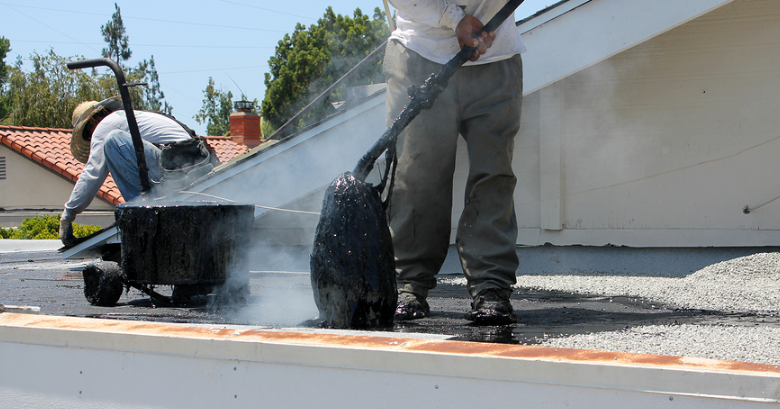Also known as built-up roofing, tar and gravel roofs are the oldest types of roofs commonly used in commercial buildings and some older homes particular in the southern part of the United States.
Made with different layers of various materials in an alternating manner, these roofs initially were made with tar paper materials but currently are made from material like fiber membranes.
Installation
Installing tar and gravel roofs is usually a tedious task that must be done by professionals since it requires using several layers of material.
The first layer has to be installed directly on the roof substrate; you can use a waterproof sheet on the roof to act as a base for this layer.
You then alternately lay bitumen and reinforced fabric such as fiber membranes, with the number of layers depending on your preferences and budget; however, they can't be less than three.
The outer layer has to be made of stone to protect the inner layers from harsh weather conditions such as rain, hail, and extreme sun.
Maintenance
Regular maintenance for tar and gravel roofs requires keeping the layers in good condition as long as possible depending on the effects of weather.
Maintenance involves adding fiberglass or foam layers to enhance insulation and applying an acrylic coating can also further improve the lifespan of the roof as it offers more protection to the layers.
Problems
Despite its advantages, tar and gravel roofs have some problems which include:
-
Strain On Roof Structure – Because of the multiple layers that make up these roofs, that added weight can cause strain to the entire roofing structure.
-
Installation Issues - The installation process requires that professional roofers face dangers such as hot tar bursting into flames plus the entire process is messy and smelly, which can take a toll on you.
-
Locating Leaks - Another problem is that it can be hard to identify the exact location of leaks.
-
Degradation of Materials - The materials used can degrade over time, cannot be recycled, result in gravel piling up in the gutter which can trap water that will eventually turn into mold.
Repairs
Repairing tar and gravel roofs require installing patches on the specific areas that are affected placed over the already existing sheets, after which they are covered again by gravel.
When there are too many patches, the roof will have to be replaced by removing all of the material from the roof and replacing it with new roofing material.
Fortunately, this only happens after decades of use.
Conclusion
Tar and gravel roofs have many benefits such as durability, energy efficiency, and cost-effectiveness.
If you are buying a home with such a roof, it's advisable to see if patches cover more than 25% of the roof, in which case the whole roof will have to be replaced.
Tar and gravel roof maintenance and repair is relative inexpensive, so don't automatically discount a home with such a roof as it may be the right choice for that home!

